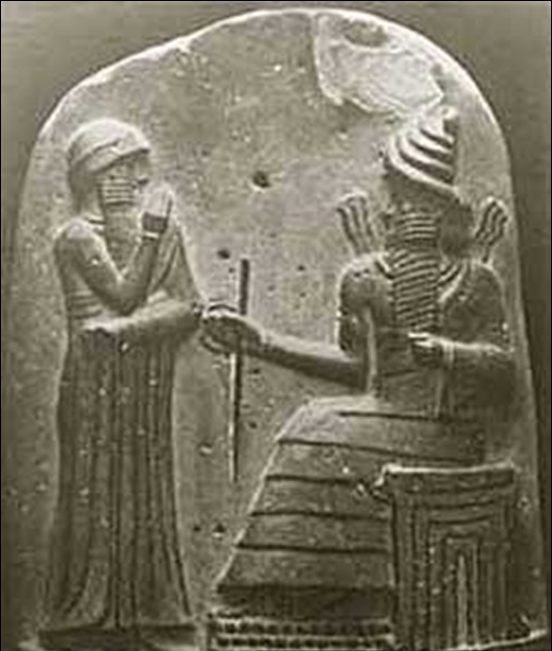The Hanging Gardens of Babylon, an architectural masterpiece associated with the name of a woman, stands as one of the wonders of the world. The Hanging Gardens and the walls of Babylon (present-day Iraq) were considered one of the Seven Wonders of the Ancient World. They are believed to have been built by King Nebuchadnezzar II around 600 BC.
The Hanging Gardens of Babylon have been extensively documented by Greek historians such as Strabo and Diodorus Siculus, yet there is little evidence of their actual existence. In fact, there are no records from the Babylonians themselves confirming the existence of such gardens.

The entire architectural system surrounding the Hanging Gardens
Some (detailed) evidence collected during excavations of the palace at Babylon suggests a resemblance to the descriptions, but does not fully prove it. Various schools of thought throughout history may have confused its location with gardens that existed in Nineveh, and evidence of its existence has been found on stone tablets. These inscriptions describe the use of something akin to an Archimedes screw to raise water to the necessary heights.
The Hanging Gardens may not have been “hanging” in the sense of being suspended by cables. Its name originates from an inaccurate translation of the Greek word kremastos or the Latin pensilis, which not only means “hanging” but also “overhanging,” as in the case of a terrace or a balcony.
Referred to as the Hanging Gardens because the gardens are situated high up, consisting of four tiers built of stone in a manner somewhat resembling a ziggurat, a very popular architectural style in Mesopotamia.
The lowest tier of the garden is a square measuring 246m by 246m, supported by a system of 25 by 25 columns. The second tier has a 21 by 21 column structure, the third tier 17 by 17 columns, and the top tier 13 by 13 columns, with dimensions of 123m by 123m. On each step of the terrace is a flat garden constructed with 5m long and 1.2m wide stone blocks placed on thick walls. On these stone slabs, a layer of reeds mixed with bitumen is laid, covered with two layers of baked tiles, and topped with a lead sheet to prevent water from seeping down to the lower levels.

At the top, a thick layer of soil supports large trees. The task of watering the gardens was a significant challenge that was solved quite effectively here.
According to archaeologists, water was brought up from the river using a system of continuously rotating chain buckets drawn from three wells, manned by a large workforce that watered and tended to the trees and flowers, keeping the Hanging Gardens lush and green. Today, the Hanging Gardens remain as ruins with crumbling stone walls, attracting tourists each year to admire the remnants of the foundation of the lower tier of the gardens and to envision the marvelous garden of the beautiful Queen of the land of One Thousand and One Nights nearly 3,000 years ago.

King Hammurabi.
Ancient historians listed the Hanging Gardens as one of the Seven Wonders of the Ancient World. There are many theories about the origins of the gardens, but they can largely be categorized into two directions: either Queen Semiramis was the creator of this masterpiece, or it was built by the king as a gift for Queen Amitis.
Around 2500 BC, in the Mesopotamian region, which encompasses the basins of the Tigris and Euphrates rivers (in present-day Iraq), the city of Babylon emerged. By the 18th century BC, under the reign of King Hammurabi (1793-1750 BC), Babylon became a renowned and prosperous city. In subsequent dynasties, Babylon gradually declined. It was not until the 7th century BC, during the reign of King Nebuchadnezzar II (604 – 561 BC), that Babylon was revived and became a thriving center of economics, culture, and art in ancient times. This location served as a hub for trade routes across the vast Near East. After completing his main palace, Nebuchadnezzar II built the famous Hanging Gardens in the northern part of Babylon.
 Hanging Gardens of Babylon as Described.
Hanging Gardens of Babylon as Described.
It is said that the king built this garden for Queen Amitis, his beloved wife. Amitis was from Media, the daughter of King Cyaxares. To ease her homesickness, the king decided to create this precious garden, planting beautiful and rare trees from Media.
The second hypothesis suggests that about 1,000 years after Hammurabi’s dynasty, Queen Semiramis aimed to make Babylon truly splendid, thus expanding the old city and constructing a grand bridge across the Euphrates River to connect the two city areas. During this expansion of Babylon, Semiramis built the famous Hanging Gardens.
Whether the Hanging Gardens of Babylon are associated with Semiramis or Amitis, this masterpiece ultimately originated from a woman. Standing atop the Hanging Gardens, one could overlook all of Babylon as it reaches nearly 100 meters high. The gardens represent a lush green oasis, a symbol of hope and a guiding point for caravans traversing the distant, scorching desert.


















































